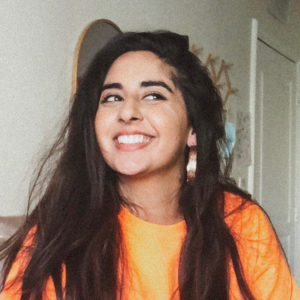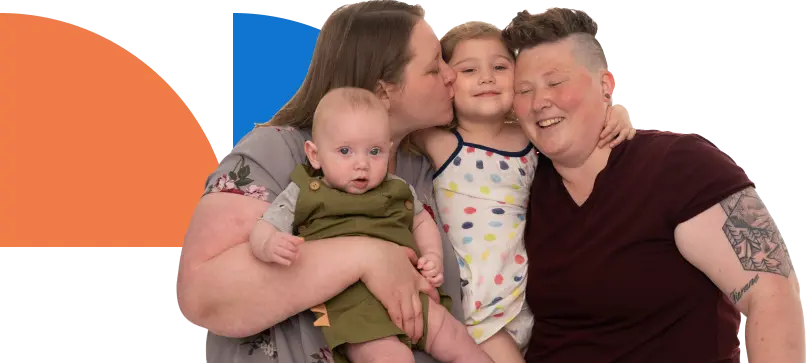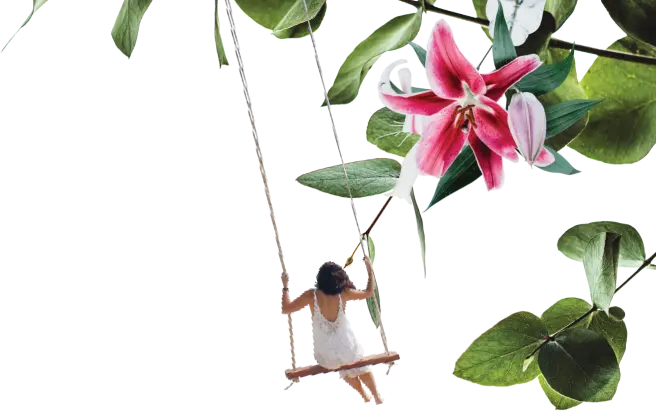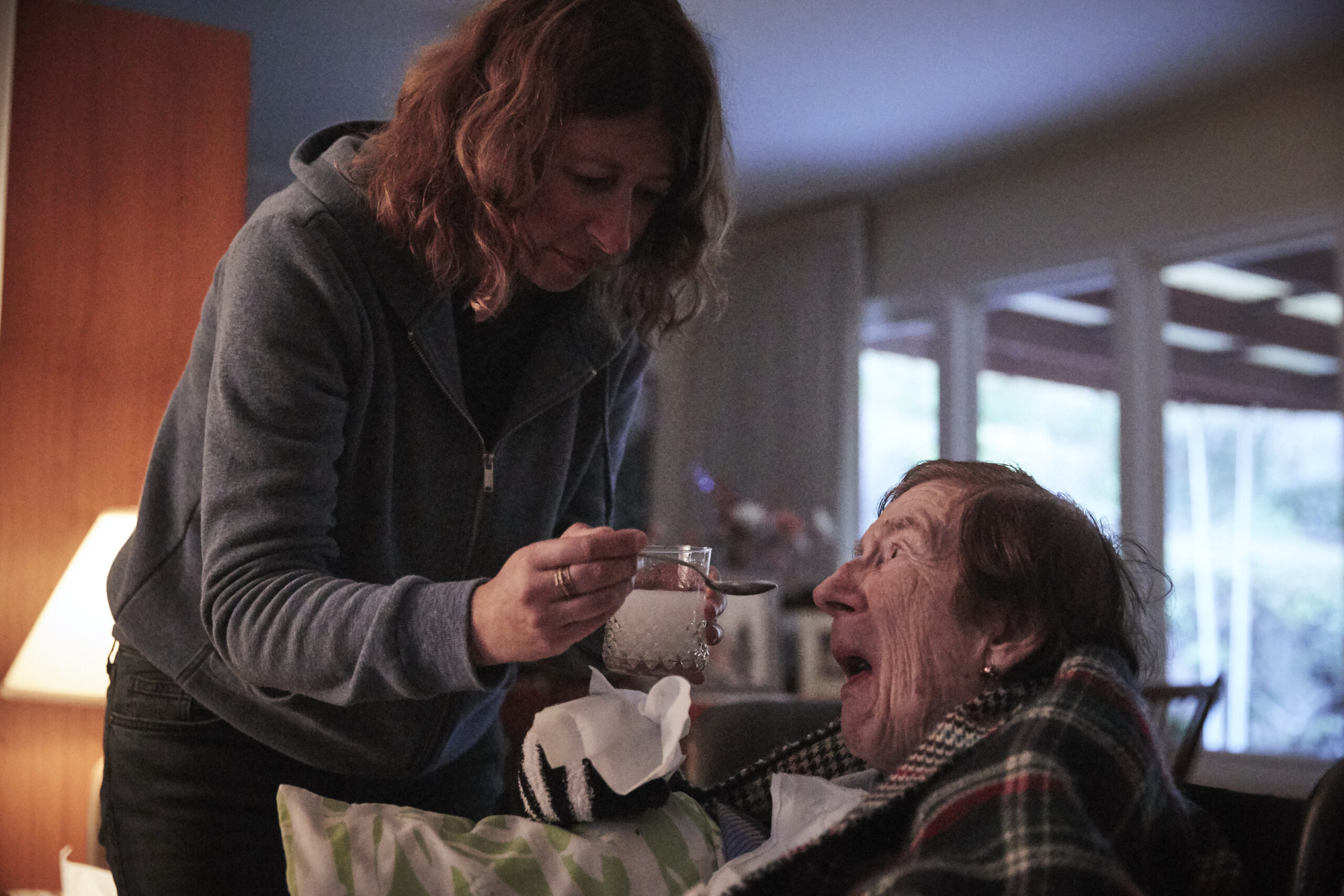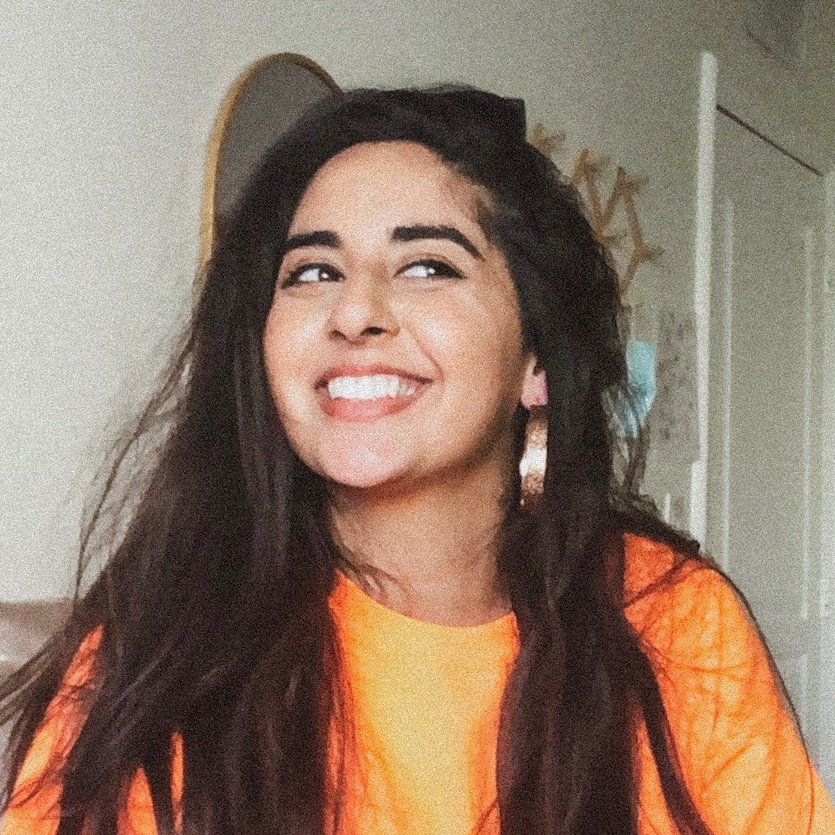
We are so excited to welcome Maya Minhas to our team as our new Culture Change Manager! Maya joins us from Participant, and she’s excited to keep using her considerable narrative creation skills to bring real change to the care landscape. Read on to find out why she thinks NOW is the time to tell powerful care stories, and how her own care experiences have shaped her perspective.
What drew you to Caring Across, and what does our work mean to you?
I feel that my new role at Caring Across is a perfect combination of all of my life and work experiences. My background is in using social justice and storytelling to create culture change and shift narratives. And I also have lived experience as a caregiver.
Plus, in the past year, our experiences globally with COVID-19 demonstrated to me that care is a systemic issue and that collective and community care is possible. Before that, I always viewed care as an individual experience, which I now understand is because that’s what our systems set us up to believe. But it’s not how things have to be.
What is your new role, and what are you most excited to dig in to?
My new role is Culture Change Manager, and I’m focusing on entertainment and pop culture advocacy in film and television. I’ll be working on shifting narratives predominantly in pop culture and content.
What I think I’m most excited about is that we’ve seen – historically and consistently – but especially during this COVID era – that powerful pieces of pop culture content have the potential to shift public opinion and public perspectives. We’re seeing the power of a story well-told. So I’m really excited about being able to bring care into that, and also to transform an issue that has had and continues to have such an outdated and damaging reputation in media. I want to make sure that caregivers not only feel more represented, but also that their stories are told in more nuanced ways. Those stories can help us to progress how we each get support in our daily lives and communities.
What kind of work have you done in the past?
I started my career in grassroots, very small scale nonprofits. It’s always been a non-question for me that I want to make an impact or some form of social change in my work – it’s just always been the most important thing to me and in my upbringing.
And from there, I got into using digital and media as tools to create accessible impact. Digital tools allow people of all ages and backgrounds to have agency and create a better environment and community without needing specific resources of access.
Through my experience in digital, I became a strategist and worked for a little bit in tech, but I always worked for organizations and spaces that combined arts and activism in some way. So I was always using digital strategy and my product background to innovate around measuring impact and enabling impact.
In my digital work, I found I was still using my creative background in visual arts, photography, and media to tell stories. From there I started working at Participant, where I worked for the last two years. At Participant, I was building campaigns for social change films to mobilize and equip audiences so that they could help to better the issues they saw highlighted.
What is your experience with care, and how did it bring you to do this work?
I’ve always grown up with a very big extended family, and intergenerational care was always a big factor of that. I grew up with my grandparents always around, and then, as I got older, it was always a priority that everybody takes care of everybody. And from having close proximity to my grandparents who are also immigrants, I was able to see the potential of community care. To this day, when I can’t be there to care for my grandparents, supporting them is a shared responsibility amongst people of all ages in my family: grandchildren, sons, daughters, spouses, everybody. In addition to this, I’ve also been able to see the role that community care can play and what that looks like in practice. Through the support of our neighbors, I’ve witnessed the value of what it looks like when care is treated as a collective responsibility that’s mutually beneficial for everybody: intergenerationally, and at scale.
And then separate from my family, when I was younger, I also cared for a former teacher of mine who became a good friend after I graduated from high school. She didn’t have anybody who was able to care for her at the time, so I became her primary caregiver for the remainder of her life. I was only 18 at the time, but it was a very mutually beneficial and life-changing experience that showed me the harsh reality of not having access to the support one may need.
What do you like to do outside of work?
I recently started a pottery class, which is exciting – I’d never done it before! Aside from that, I’ve been shooting photos with film for over a decade, and I really enjoy cooking and running as well.
I now also have my first apartment to myself, so home decor is something I’ve been obsessing over. I just painted a mural in my kitchen, which my landlord doesn’t know about!
